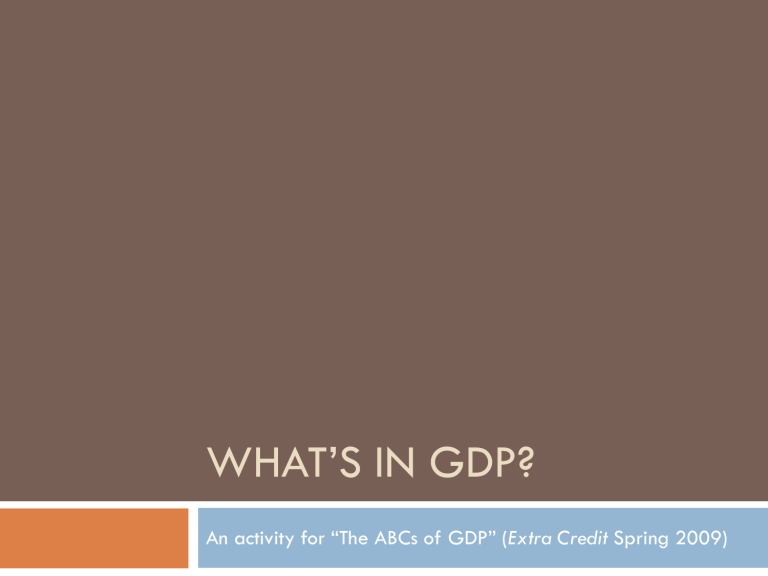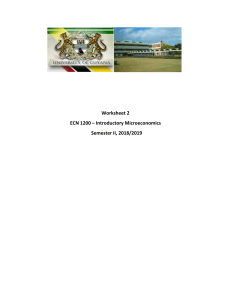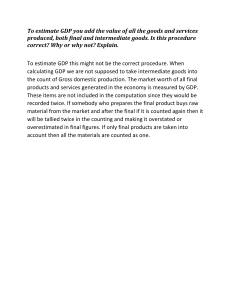
WHAT’S IN GDP? An activity for “The ABCs of GDP” (Extra Credit Spring 2009) What is gross domestic product (GDP)? Currency value (such as U.S. dollar) of all final goods and services produced within a country in a given period Total income of a nation Measure of nation’s economic well-being Measure of a nation’s economic growth from one period to the next What’s included in GDP? Consumption by households Goods: groceries, clothes, iPods Services: haircuts, oil changes What’s included in GDP? Investment by businesses and households Fixed assets for production New homes Inventories What’s included in GDP? Government expenditures by local, state, and federal government Roads and schools What’s included in GDP? Net exports Value of a country’s exports to other nations, less its imports from other nations What’s included in GDP? GDP = Consumption + Investment + Government spending + Net exports What’s not included in GDP? Intermediate goods Used goods Underground production (black market) Financial transactions Household production Transfer payments What are the components of GDP? GDP Personal Consumption Expenditures Investment (I) (C) Fixed Investment Nonresidential Government Net Exports (G) Inventories Residential GDP = C + I + G + NX (NX) Exports Imports How much of GDP is each component? Average Percent of GDP since 2003 Component % of GDP 110% 100% Government 19% Investment 16% 90% 80% 70% 60% 50% 40% Consumption (PCE) 70 % 30% 20% 10% 0% -10% Net Exports -5% GDP 100% Source: Bureau of Economic Analysis What is a good rate of growth? Real and nominal GDP When GDP is computed in the current year’s prices, rising prices (inflation) can make it difficult to determine if a change in GDP from one year to the next is due to the country’s production of more goods and services or to increases in the price level. Nominal GDP: GDP that is not adjusted for inflation. The value of goods and services in current prices. Real GDP: The dollar price of GDP in a base year’s price, used to compare changes in GDP from one year to the next. An increase in real GDP is an increase in economic growth. What GDP does not tell us Does not measure income distribution Does not measure non-monetary output or transactions (e.g., barter, household activities) Does not take into account desirable externalities, such as leisure or environment Does not measure social well-being Correlates to standard of living but is not a measure of standard of living





